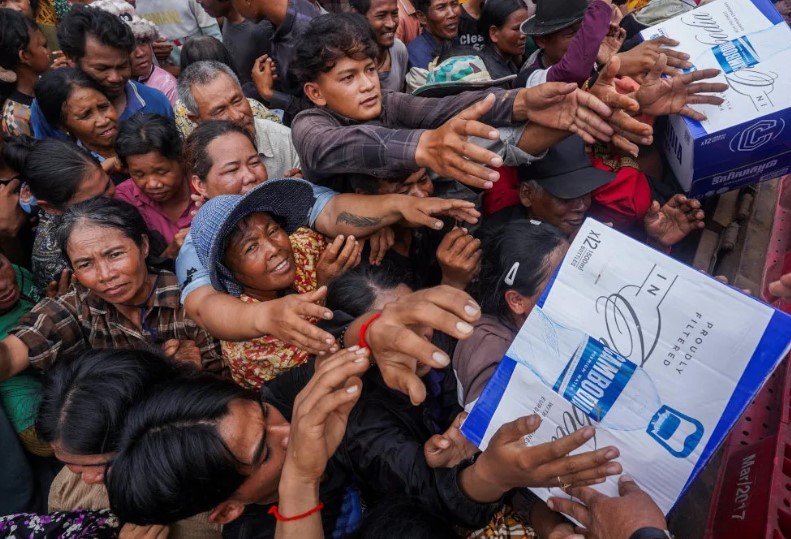After deadly skirmishes and rising border tensions, all eyes turn to Kuala Lumpur for a high-stakes diplomatic reset
Just days after gunfire echoed across the Thai-Cambodian border, top officials from both countries are headed to Malaysia to try and end the worst fighting in over a decade. The talks, scheduled for 3 p.m. Monday local time, will mark the first formal engagement since the fatal shooting of a Cambodian soldier in late May reignited an old and fragile fault line.
In a twist that signals the seriousness of the standoff, the United States has already dispatched senior officials to Malaysia. Washington is watching closely — and it’s not just for show.
The Tensions That Brought Them Here
The current crisis didn’t begin overnight. It’s been simmering for years, kept in check by uneasy truces and quiet diplomacy. But when a Cambodian soldier was killed in a sudden flare-up along the border in late May, something snapped.
Thailand blamed rogue units. Cambodia called it provocation. By July 24, the firefight had reignited — this time spreading faster and hitting harder.
A Thai security official, requesting anonymity, described the past week bluntly: “It’s not war, but it’s starting to look like one.”
One sentence. But it hits.
Since then, shelling near villages like Batthkao and Choam Khsant has displaced hundreds. Schools have turned into shelters. Water trucks are now more common than postal vans.

What’s at Stake at the Malaysia Talks?
The stakes are high — and not just for Bangkok and Phnom Penh.
Malaysia, hosting the talks, has positioned itself as a neutral mediator. Acting Thai Prime Minister Phumtham Wechayachai will lead Bangkok’s delegation. Cambodian Defense Minister Tea Seiha, a close ally of Prime Minister Hun Manet, heads the other side.
There’s a lot to cover. But the three top agenda items, according to sources close to both camps, include:
-
Immediate cessation of border hostilities
-
Return of displaced civilians and rebuilding coordination
-
A new demarcation mechanism for the contested zones
No one’s expecting a silver bullet. But even a temporary cooling-off could ease pressure on local populations — and prevent further U.S. involvement.
America’s Quiet But Powerful Role
Enter the United States. Secretary of State Marco Rubio confirmed Sunday night that U.S. personnel are “already on the ground” in Kuala Lumpur to support peace efforts.
Rubio said President Donald Trump and his administration had been in “direct and frequent communication” with both Thai and Cambodian leaders, pushing for dialogue and offering technical support.
Washington’s reasons are partly humanitarian — but also strategic. The Thai-Cambodian border sits uncomfortably close to key shipping routes in the Gulf of Thailand and regional infrastructure tied to China’s Belt and Road Initiative.
That’s not something the Pentagon or the White House is willing to ignore.
The Ground Reality: Refugees, Scarcity, and Fear
In the villages of Oddar Meanchey and Surin provinces, daily life has collapsed into chaos.
At Batthkao Primary School, where families now sleep on mats in empty classrooms, aid workers say children are showing signs of stress and malnutrition. Food supplies are tight. But it’s clean water that’s in dangerously short supply.
One paragraph. One sentence. Real life doesn’t need many words.
The Thai Red Cross has dispatched mobile clinics. Cambodian monks have joined volunteer efforts. But the lack of coordination — and fear of renewed shelling — is slowing everything down.
Military to Military: A Cautious Standoff
Neither side wants full-blown war. But both are on alert.
Satellite images released over the weekend by independent defense analyst firms show troop build-ups on both sides of the Dangrek Mountain range. Thai artillery has reportedly been repositioned. Cambodia has moved armored units closer to the frontline.
Defense officials from both countries are talking — quietly — to avoid accidental escalation. But trust is thin. And when bullets fly, it doesn’t take much for restraint to break.
Just ask the families still waiting to return home.
Table of Key Developments So Far
Here’s a snapshot of the conflict timeline and current peace framework:
| Date | Event Description |
|---|---|
| May 26, 2025 | Cambodian soldier killed in a border skirmish |
| June–Mid July | Sporadic clashes reported but no formal dialogue |
| July 24, 2025 | Renewed heavy clashes near Batthkao, over 200 displaced |
| July 28, 2025 | Peace talks begin in Kuala Lumpur, US joins as observer |
One table. Four lines. All you need.
Could This Actually Work?
Maybe. Maybe not. Analysts are cautious but not cynical.
Regional peace expert Sophal Ear says this could be a “turning moment” — if both sides use the talks not as a PR exercise, but as a chance to rewire a dysfunctional relationship.
Thailand, still navigating political instability, has domestic reasons to show strength but also flexibility. Cambodia, freshly dealing with its post-Hun Sen political reality, wants to avoid being seen as the weaker actor — especially with China watching.
Both leaders have something to prove. And everything to lose.
